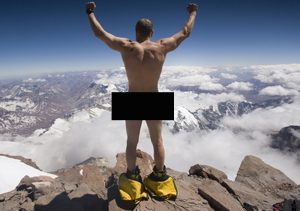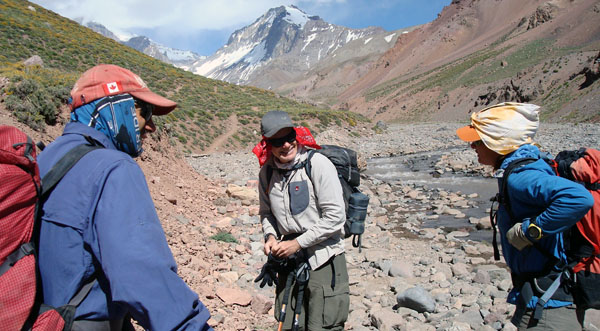Digital cameras have really changed how we shoot images in the mountains. For less than a couple hundred bucks, you can get a camera that will shoot pictures that you can enlarge to small poster size and proudly display them, framed on your wall. The key is to keep that camera happy so that when the time comes to shoot that amazing National Geographic quality shot, the camera will work for you. 
1. Bring an extra battery (or two) and loads of memory. Lithium-ion batteries are very lightweight and having battery life on summit day is worth the cost of an extra battery. I bring two 16 GB memory cards so I have back up if one gets corrupted or lost and so that I can shoot all the video I’d ever want to subject friends and family to.The higher speed your card writes, the better, especially for modern cameras.
2. Invest in a small, lightweight camera case. I like the zippered pouch-style ones from Lowe Pro. They have a small slot in the back for storing an extra memory card, and they have a velcro strap that I can easily attach and detach from the bottom of my pack’s shoulder strap. The reality is that I mostly carry my camera in the thigh pocket of my soft shell pants, but the case is nice for storing it in the tent. Put your camera in the case before you toss it into your tent, as this will help keep condensation due to temperature fluctuations off your camera body. Keeping your camera dry will prevent the dreaded frozen camera syndrome that I keep hearing about, but have never experienced.
3. SLR, Hybrid or compact? This call is getting tougher to make, with the improvements in compact and sub-compact cameras. I don’t carry my digital SLR on Aconcagua anymore, although there are times I wish I had my wide angle lens. I’d recommend taking a lightweight camera with as much “optical zoom” as possible and a fairly wide angle lens, and then use the buckshot technique (shoot lots and lots and hope you hit something good). Some point and shoot cameras are almost the equals of SLRs. A guide favorite is the Canon G10 or the G11. The new, “Hybrid” cameras are very intriguing, although we are not personally familiar with any of them. The Nikon J1 looks like a good option for big mountains, as it is relatively small, has interchangeable lenses and a built in flash.
4. Rule of Thirds. Divide your frame into thirds, be they horizontal or vertical and place your subject in one of the thirds at either end. You can shoot dramatic images that really tell a story with this simple technique.
5. Todd’s Toe Warmer Trick. I bring one pair of disposable toe warmers for summit day. These come with adhesive backing that I use to attach them to my camera, in such a way that they keep my battery warm. This buys me 5 hours of battery life on even the coldest days. If your camera doesn’t easily allow for this technique, stick the warmers to the inside of your camera case. Alternatively, dropping a hand warmer in your camera case (or pocket) with your camera will also help.
Camera batteries will last a long time, even in a cold environment IF you don’t use them when they are cold. A cold battery will only give you a few shots when even a moderately warm one might give you a hundred. Don’t keep your camera next to your skin, as this will cause moisture to get into it and will cause it to freeze. A warm pocket or a warm camera case will ensure that you bring home some summit shots.
6. Pass your camera to a friend. If you are the only one to shoot pictures with your camera, your friends and family will be bored looking at all your teammates, who they do not know. Pass your camera to the person on the rope in front of you and ask them to shoot loads of shots of you sauntering along with that monster pack!





